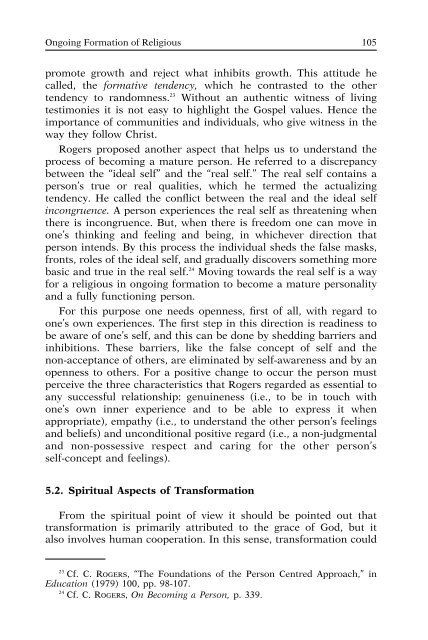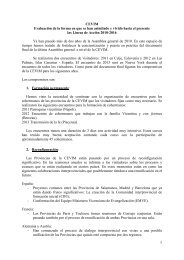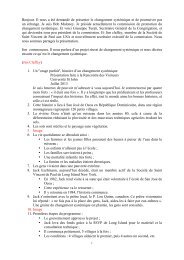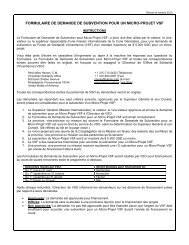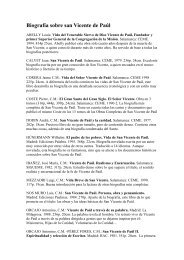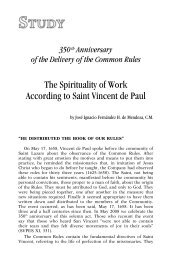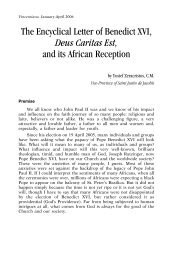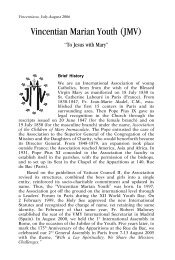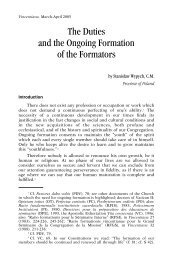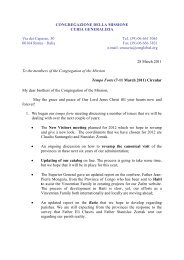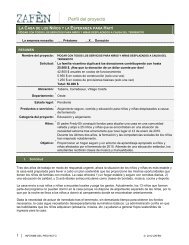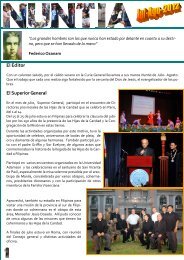Ongoing Formation of Religious - CMGlobal
Ongoing Formation of Religious - CMGlobal
Ongoing Formation of Religious - CMGlobal
You also want an ePaper? Increase the reach of your titles
YUMPU automatically turns print PDFs into web optimized ePapers that Google loves.
VINCENTIANA 1/2-2008 - INGLESEApril 17, 2008 − 4ª BOZZA<strong>Ongoing</strong> <strong>Formation</strong> <strong>of</strong> <strong>Religious</strong>105promote growth and reject what inhibits growth. This attitude hecalled, the formative tendency, which he contrasted to the othertendency to randomness. 23 Without an authentic witness <strong>of</strong> livingtestimonies it is not easy to highlight the Gospel values. Hence theimportance <strong>of</strong> communities and individuals, who give witness in theway they follow Christ.Rogers proposed another aspect that helps us to understand theprocess <strong>of</strong> becoming a mature person. He referred to a discrepancybetween the “ideal self” and the “real self.” The real self contains aperson’s true or real qualities, which he termed the actualizingtendency. He called the conflict between the real and the ideal selfincongruence. A person experiences the real self as threatening whenthere is incongruence. But, when there is freedom one can move inone’s thinking and feeling and being, in whichever direction thatperson intends. By this process the individual sheds the false masks,fronts, roles <strong>of</strong> the ideal self, and gradually discovers something morebasic and true in the real self. 24 Moving towards the real self is a wayfor a religious in ongoing formation to become a mature personalityand a fully functioning person.For this purpose one needs openness, first <strong>of</strong> all, with regard toone’s own experiences. The first step in this direction is readiness tobe aware <strong>of</strong> one’s self, and this can be done by shedding barriers andinhibitions. These barriers, like the false concept <strong>of</strong> self and thenon-acceptance <strong>of</strong> others, are eliminated by self-awareness and by anopenness to others. For a positive change to occur the person mustperceive the three characteristics that Rogers regarded as essential toany successful relationship: genuineness (i.e., to be in touch withone’s own inner experience and to be able to express it whenappropriate), empathy (i.e., to understand the other person’s feelingsand beliefs) and unconditional positive regard (i.e., a non-judgmentaland non-possessive respect and caring for the other person’sself-concept and feelings).5.2. Spiritual Aspects <strong>of</strong> TransformationFrom the spiritual point <strong>of</strong> view it should be pointed out thattransformation is primarily attributed to the grace <strong>of</strong> God, but italso involves human cooperation. In this sense, transformation could23Cf. C. ROGERS, “The Foundations <strong>of</strong> the Person Centred Approach,” inEducation (1979) 100, pp. 98-107.24Cf. C. ROGERS, On Becoming a Person, p. 339.


